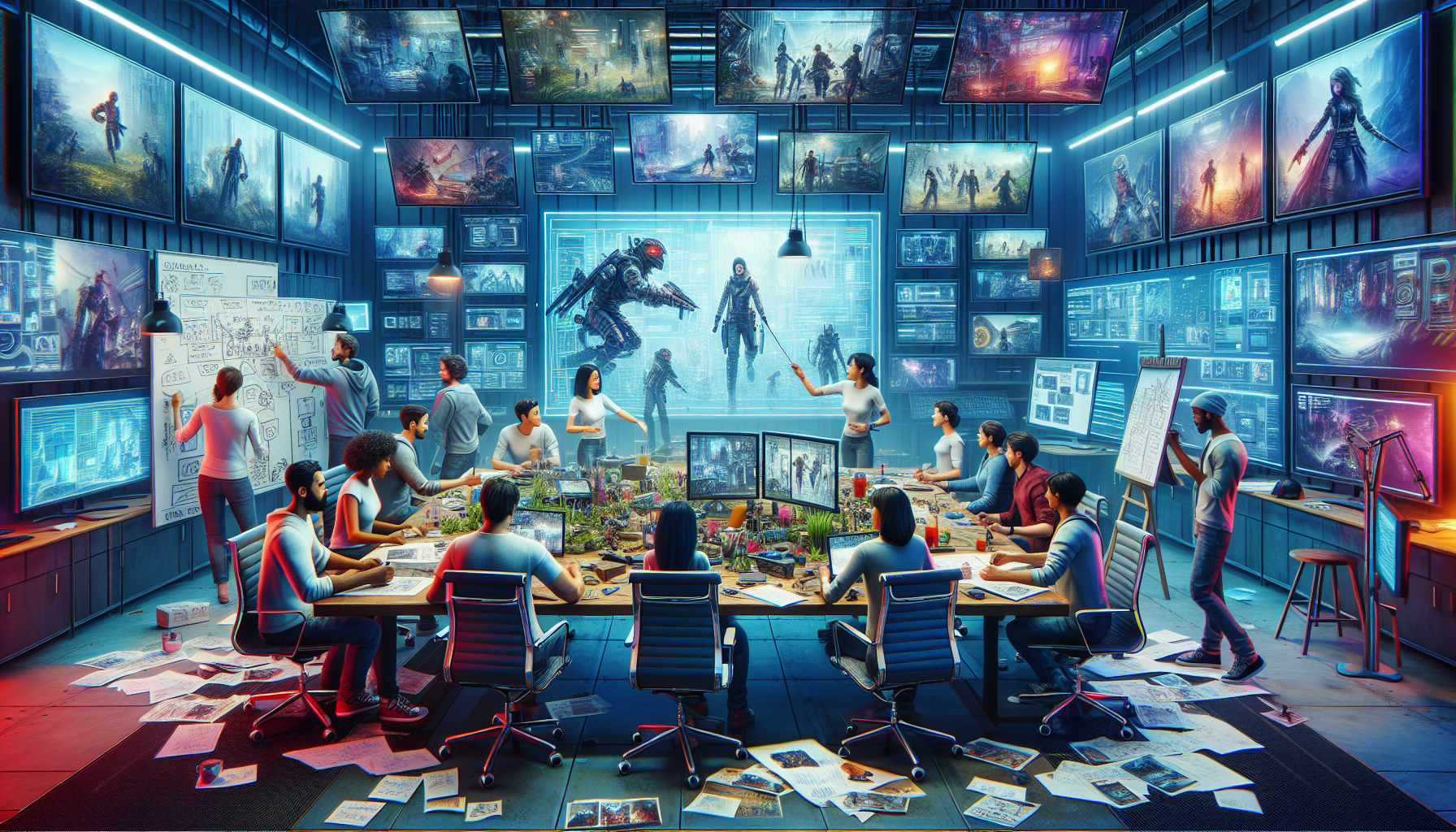
Once Upon a Pixel: Crafting Compelling Screenplays for Video Games
Video games have long escaped the confines of mere pixels and simple commands, evolving into complex narrative experiences that rival films and books. But what’s the secret sauce? What takes a video game from being a series of shoot this and jump here commands to a sprawling epic that has players feeling every pixelated emotion? Enter the wildly creative world of video game screenwriting. Grab your joysticks, folks—it’s time to dive into the nitty-gritty of crafting narratives that pack a punch stronger than a Street Fighter uppercut.
The Hero’s Journey to Your Console
Think of your favorite video game. What made it memorable? Was it the intricate level design, the stunning visuals, or the way the storyline gripped you by the joystick? A well-crafted screenplay in video games is akin to a meticulously planned dungeon in Zelda; each element and encounter is designed to challenge and engage the player in a narrative quest. But unlike traditional screenwriting for films or stage, writing for video games offers a wild twist: interactivity.
The player is both the audience and the protagonist, which means our plucky screenwriter must anticipate and script multiple outcomes and reactions. Will the player go left or right? Will they choose to fight the dragon or befriend it? Like a choose-your-own-adventure book on steroids, video game screenwriting requires a blend of prophecy and flexibility, coupled with the ability to weave an engaging tale.
The Plot Thickens: Structures and Branches
Now, crafting these multifaceted narratives isn’t as simple as throwing a couple of plot points into a blender and hoping for the best. Video games often require a labyrinthine approach to plot structuring, a kind of narrative spaghetti that can loop and tangle in delightful ways. Think multiple story arcs, branching decisions, and potential plotlines that change with player choices. It’s like keeping a dozen narrative plates spinning while reciting Shakespeare during a hurricane.
To navigate this chaos, writers use tools like flowcharts or narrative design software. These help map out the if this, then that jungle that is game storytelling. They ensure that no matter how far off the beaten path a player strays, the story remains engaging and immersive.
Characters: Not Just NPCs but NPCs with Purpose!
Every memorable game has them—the rogue with a mysterious past, the AI with an existential crisis, the villain with surprisingly sound reasons for wanting to rearrange the cosmos. In video games, characters need to be more than just dialogue machines. They must react dynamically to player actions, serving not only the plot but also enriching the gamer’s experience.
This is where our intrepid screenwriter must don their psychologist hat, diving into character backstories, motivations, and potential growth. These pixels with purpose aren’t just fulfilling narrative needs; they’re the soul of the game. They provide emotional stakes, aid or oppose player objectives, and, most importantly, make the world feel real.
Dialogue and Player Interaction: More Than Just Press X to Speak
Video game dialogue can be a tricky beast. It’s not just about what the characters say; it’s about providing options that feel meaningful. Ever been stuck in a game choosing between saying Yes, Absolutely, or Indubitably? Not the pinnacle of player agency, right?
Effective video game scripts offer real choices that affect the game’s world, characters, or outcomes. They turn simple conversations into intricate dances of persuasion, trickery, or even romance. Each line of dialogue must reflect the player’s potential feelings and choices, making scripting a game akin to predicting every possible mood swing in a room full of teenagers.
Embrace the Tech: Leveraging the Medium
Unlike filmmakers, game writers have a whole arsenal of tech tricks up their sleeves—the game’s engine itself! From voice-overs that react to player stats, to cutscenes that differ based on earlier choices, the technology can help make the script a living part of the gaming experience. This is where the magic happens; where storytelling leaps off the page and becomes an interactive drama, comedy, or horror. Writers get to play god, deciding when a gentle narrative nudge or a catastrophic plot twist will have the greatest impact.
So, there you have it—a peek behind the curtain of video game screenwriting. It’s a wild, woolly world of weaving intricate tales where the viewer is part of the narrative tapestry. A tough gig, sure, but for those with the knack for narrative, the passion for plot-twisting, and the gusto for gaming—there’s hardly a more exhilarating challenge. Ready to grab that digital pen and start your story? Game on!






